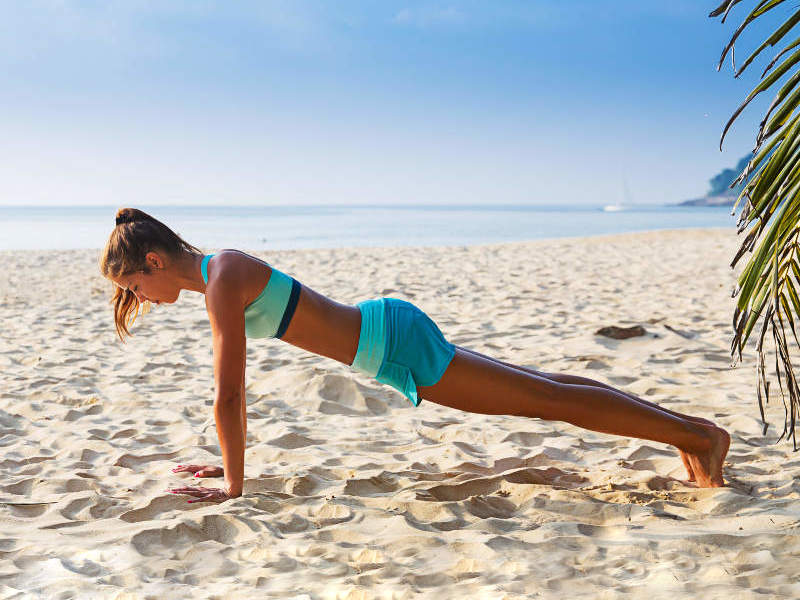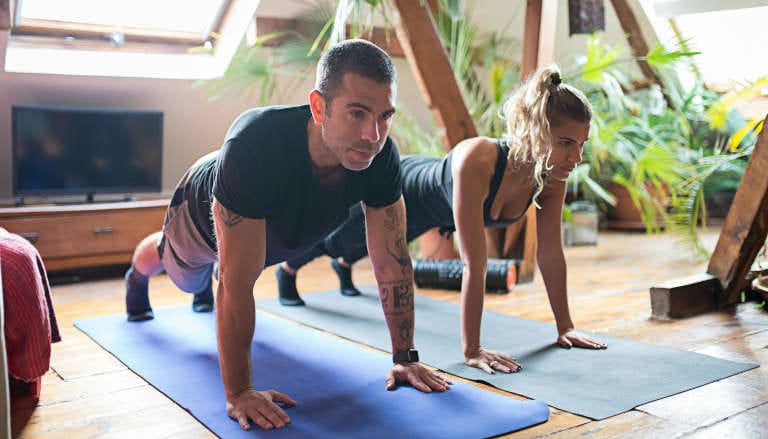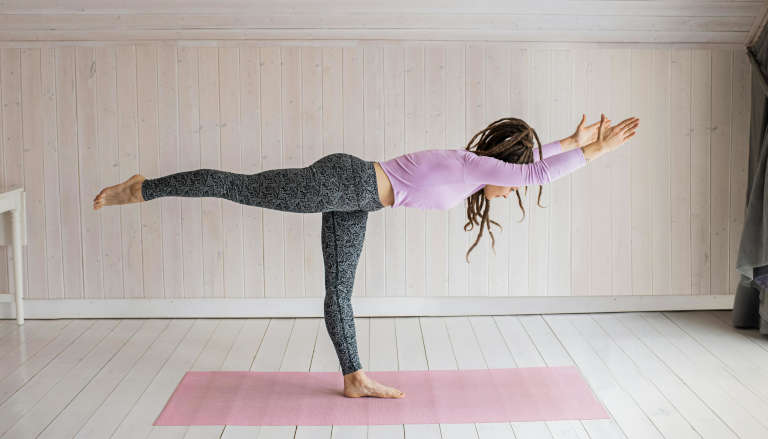
Power Up Your Core: 7 Yoga Asanas for Increased Strength & Balance
Your core—the silent architect of your posture, balance, and inner strength—extends far beyond visible abs.
It’s where physical power meets spiritual resilience, the foundation from which you face life’s challenges with unwavering stability.
This central region doesn’t merely support your spine; it anchors your entire being, transforming ordinary movements into expressions of inner harmony.
When strengthened through yoga, your core becomes the bridge connecting physical discipline with emotional equilibrium and mental clarity.
Join us as we explore seven transformative yoga asanas that awaken this vital foundation.
Through these practices, you’ll discover how a powerful core creates not just physical stability, but a profound sense of centeredness that permeates every aspect of your life.
Ready to Deepen Your Journey?
Access exclusive content guiding self-discovery, transformation & growth. Embrace authenticity as we explore consciousness, spirituality & well-being.
Join the Wholebeing Newsletter Today!
By signing up, you agree to receive our well-being emails, special offers, and agree to our Privacy Policy. You can unsubscribe at any time.
Your Core is More Than Just Abs
In our ever-evolving wellness journey, it’s easy to equate the core solely with the visible contours of the abdomen, often showcased in fitness magazines or flaunted on beach days.
However, the core, in its holistic essence, is so much more than that.
It’s a comprehensive system, a nexus of muscles that interlace and intertwine, forming the cradle for our body’s movement and our soul’s grounding.
The Front Body: Rectus Abdominis, Transversus Abdominis
At the forefront, we have the Rectus Abdominis and the Transversus Abdominis.
While the former gifts us the classic “six-pack” appearance when toned, its deeper purpose is to support our posture and facilitate movement.
The latter, lying beneath, acts like a corset, hugging our internal organs, and plays a crucial role in maintaining stability and balance.
The Back Body: Erector Spinae, Multifidus
Venturing to the back, the Erector Spinae and Multifidus stand tall, quite literally.
These muscles run along our spine, ensuring we stand erect, move with grace, and bend with fluidity.
They’re the unsung heroes, providing strength and support, reminding us that not all essential things are in the limelight.
The Side Body: Internal & External Obliques
Gracefully contouring the sides are our Internal and External Obliques.
These muscles intertwine in harmony, allowing us to twist, turn, and sway with the rhythms of life.
They are reminders of our flexibility, both physical and metaphorical, enabling us to adapt and flow with the changing tides of our journey.
The Base: Pelvic Floor Muscles
And at the foundation lies the often-overlooked yet immensely significant Pelvic floor muscles.
These muscles are the base of our core’s pyramid, supporting our internal organs and assisting in functions we often take for granted.
Beyond the physical, they also resonate with our root chakra, connecting us to the earth and grounding our spiritual energy.
Understanding your core means recognizing it’s a multifaceted system of alignment, anchoring, strength and suppleness—far beyond mere aesthetics.

Benefits of a Strong Core
A fortified core is akin to the roots of an ancient tree. It anchors us, ensuring we stand tall through life’s changing seasons.
Its unseen strength permeates our daily actions, echoing in our posture, our movement, and even in our stillness.
Enhanced Balance & Stability
Much like the centered equilibrium of a dancer, a strong core fosters impeccable balance.
It acts as our body’s intuitive compass, navigating the delicate dance between movement and stillness.
As we walk, run, or simply stand, our core muscles work in harmony, ensuring we move with grace and confidence.
It’s not just about physical poise but also about grounding our energies and emotions, resonating with our inner world’s equilibrium.
Improved Posture
A robust core doesn’t just reflect in our abdomen but stands tall in our posture.
It’s the silent guardian that ensures our spine remains erect, our shoulders relaxed, and our chin lifted – not out of arrogance, but out of self-awareness.
An improved posture is more than just an aesthetic appeal; it’s a declaration of self-love, self-respect, and an open-hearted engagement with the world.
Reduced Back Pain & Risk of Injuries
The tale of modern living often comes with the bylines of back pain.
A strengthened core, however, turns the narrative around.
By providing essential support to our spine and by absorbing stress and strain, it alleviates back pain, allowing us to move with greater ease.
Furthermore, a fortified core acts as our body’s natural shield, reducing the risk of injuries and ensuring our journey through life is one of fluidity and joy, rather than discomfort and hindrance.

The 7 Essential Asanas for Core Power
Yoga, when it comes to poses, in its essence, is a dance of alignment, a symphony of movements where each asana adds a unique note.
Among these, certain postures act as the pivotal chords, especially when we aim to fortify the core’s strength and resilience.
1. Plank Pose (Phalakasana)
Often deemed as the cornerstone of core strengthening, this pose (pictured above) draws its inspiration from the steadiness and endurance of a wooden plank.
As you hold this pose, the primary muscles engaged are the rectus abdominis, transversus abdominis, and the erector spinae, which form the core’s front body and back body.
The benefits of Phalakasana are manifold.
Besides sculpting a resilient core, it enhances shoulder stability, fortifies the arms, and lays the foundation for many advanced postures.
Moreover, the pose’s isometric nature pushes one’s endurance, mentally and physically, creating a bridge between mind-body resilience.
For those embarking on this journey, a few tips can pave the way.
Begin with shorter holds, focusing on alignment over duration.
Ensure your wrists align under your shoulders, and there’s a straight line from the crown of your head to your heels.
As you breathe, imagine drawing energy from the earth, grounding down even as you lift and strengthen.
With time, as familiarity breeds strength, you can challenge yourself with longer holds, always honoring the whispers of your body.

2. Boat Pose (Navasana)
Navigating the vast ocean of yoga, we encounter Navasana, or the Boat Pose, a testament to balance and core engagement.
This asana, reminiscent of a boat floating gracefully on water, calls on the practitioner to discover the strength deep within their core.
Engaging primarily the rectus abdominis, the famed “six-pack muscles,” and the hip flexors, Navasana acts as a shield for our core, overseeing our forward bending motions and balance.
The profound benefits of Navasana stretch beyond just the physical.
With regular practice, it bolsters core strength, providing a robust foundation for more intricate asanas.
It also enhances our inherent balance, prepping us for life’s unpredictable waves, while sharpening our focus and determination.
When practicing this pose visualize a string attached to the chest, pulling it upwards, maintaining an open demeanor.
A slight bend in the knees is acceptable for those with tight hamstrings.
Pressing down with the sit bones offers grounding, and a soft gaze towards the horizon can assist in holding the pose with more grace.

3. Side Plank Pose (Vasisthasana)
Drawing inspiration from the sage Vasistha, Side Plank Pose epitomizes the alignment of the mind, body, and spirit.
Engaging predominantly with the obliques, Vasisthasana carves a silhouette of strength, casting aside notions of vulnerability from our side body.
It’s more than an asana—it’s a testament to endurance and core fortitude.
On the physical canvas, the Side Plank challenges and refines our body’s architecture, fortifying the spine and invigorating the muscles that hug our skeletal frame.
As shown in the image above, practitioners demonstrate the variation with feet separated rather than stacked, offering greater stability while maintaining the pose’s powerful alignment.
For novices, finding stability might require grounding the bottom knee.
Yet, with patience and perseverance, the invitation to ground the bottom knee, stack the feet, elevate the top leg, or explore other dynamic expressions awaits.

4. Warrior III (Virabhadrasana III)
Warrior III, christened after the fierce incarnation of Shiva, Virabhadra, is a symphony of poise and power.
As the body aligns, parallel to the ground, it mirrors the steady horizon where determination meets elegance.
By activating the glutes, hamstrings, and core, this asana becomes a formidable agent of strength, fortifying the very core of our being.
Virabhadrasana III, as a physical testament, teaches us the profound lesson of equilibrium in motion.
As the body hovers, defying gravity, it not only shapes our physique but also anchors our psyche.
This pose’s inherent challenge lies in its simplicity, making it an emblem of concentration and core empowerment.
To gracefully embody this warrior’s spirit, envision a straight line from fingertips to toes.
The support foot grounds us, while the lifted leg propels our aspirations skyward.
Gazing at a fixed point and imagining roots growing from the standing foot can assist in maintaining stability.

5. Crow Pose (Bakasana)
Bakasana, the Crow Pose, calls forth an avian spirit of lightness despite the grounded strength it requires.
A testament to our latent power, this pose predominantly engages the forearms, wrists, and core, weaving a tapestry of strength from fingertips to toes.
Bakasana is an exercise in trust and focus.
As we lift our feet off the ground, we’re reminded of our own potential to rise above challenges.
The act of balancing on our hands cultivates inner confidence, reinforcing the idea that with the right intention and effort, we can achieve what seems improbable.
For those new to this pose or seeking a deeper connection, starting with a solid foundation is paramount.
Begin by planting the hands firmly on the mat, spreading the fingers wide like the wings of a crow.
Engage the core and draw the knees closer to the triceps.
As you lean forward, allow the feet to naturally lift, propelled by your strong core and trust in the process.

6. Bridge Pose (Setu Bandha Sarvangasana)
Bridge Pose, or Setu Bandha Sarvangasana, is akin to constructing a bridge between our physical being and our inner soul.
By primarily engaging the glutes, hamstrings, and lower back, it provides a robust framework, mirroring the architecture of a bridge that stands tall against the currents of a river.
In the heart of this pose lies rejuvenation.
It opens up the chest and heart, allowing for a free flow of energy.
This not only revitalizes the spine but also ensures a nurturing space for the heart and lungs.
As the heart elevates above the head, there’s a gentle rush, an invitation for fresh perspectives and clarity.
For newcomers or those desiring a deeper dive, remember that every bridge has its unique curvature.
Initially, pressing the feet firmly into the ground and lifting the hips can be a gentle start.
Over time, as the back muscles strengthen and the chest opens further, one can interlace the fingers beneath the body, creating a firmer arch, or even introduce props like blocks under the sacrum for added elevation and support.

7. Half Moon Pose (Ardha Chandrasana)
Half Moon Pose, eloquently named Ardha Chandrasana in Sanskrit, captures the ethereal beauty and the illuminating radiance of the moon in its crescent phase.
As you embark on this pose, your body takes on a semblance of a crescent, calling into play the strength of the standing leg’s thigh, the anchoring stability of the foot, and the toning finesse of the obliques.
Journeying through Ardha Chandrasana, one quickly realizes it’s a celebration of opposites: groundedness and elevation, stability and expansion.
This asana challenges and rewards simultaneously.
As you reach out with one hand and stand firm on one foot, there’s a liberation of the spirit, a feeling of expansiveness that mirrors the vast night sky.
This posture naturally opens the chest, heart, and shoulders, offering a gentle invitation to breathe deeply, to inhale the mysteries of the universe and exhale any constraints.
For those setting their first footprints on this lunar landscape, props can be your guiding stars. A yoga block beneath the reaching hand can add stability and confidence.
It allows one to find the right height and engagement, easing into the balance gradually.
And if stability seems elusive, practicing near a wall can give that extra assurance, as the back foot can press against its solid support.

Integrating These Asanas Into Your Daily Practice
Embarking on the yogic path is like weaving a tapestry of self-awareness, each asana a thread adding depth and dimension.
Crafting a balanced sequence is akin to choosing the hues and patterns that resonate with our inner selves.
Start with foundational poses, slowly building up to more challenging ones, allowing the narrative of your practice to unfold harmoniously.
Just as a symphony has its crescendos and decrescendos, your practice should have its peaks and valleys.
Every meaningful journey begins with a single step, and in yoga, this step is warming up.
Gentle stretches and conscious breathwork prepare both the body and spirit for what lies ahead.
As your practice draws to a close, cooling down poses, like forward bends and gentle twists, help integrate the benefits, allowing the body to assimilate the energy cultivated.
For beginners, consistency is the golden key.
Start with shorter sessions, perhaps 15 to 20 minutes, a few times a week.
As your connection deepens, let your intuition guide the frequency and duration.
Empower Our Collective Journey
We understand the yearning for balance, purpose, and deep-rooted well-being. Together we can make a difference, and create a sanctuary where these aspirations inspire mindful living. Your support magnifies our shared impact. Gratitude for journeying with us.
Final Reflections
Our journey through yoga’s asanas reveals the profound tapestry where physical strength meets inner resilience.
A fortified core is not just a foundation for physical prowess but serves as an anchor in our spiritual voyage, grounding us in both daily tasks and transcendent meditations.
As we unfurl the mat day after day, it becomes a mirror to our soul, a space for self-reflection and growth.
May your practice be consistent, your exploration deep, and your heart always open to the boundless realms of harmony.
Spread the Wisdom & Enlighten a Friend’s Journey
You May Also Like:
